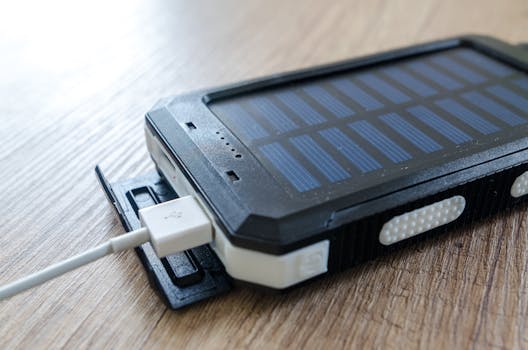LiPo vs Li-ion: Which Power Bank Chemistry Should You Choose?
9/25/2025 · Batteries · 6 min

TL;DR
- LiPo (lithium polymer) is common in ultra-slim power banks and offers flexible pouch shapes that help reduce weight and thickness. Great when size and low weight matter.
- Li-ion (lithium ion) typically uses cylindrical cells like 18650 or 21700 for high capacity and durability. It often gives better cost per mAh and is used in high capacity, rugged packs.
- Safety and longevity come down to cell quality and the battery management system. Cheap packs of any chemistry are riskier.
- Best picks by use case:
- Travel and pocketable: slim LiPo pouch power bank with USB-C PD 20W.
- Long trips and high capacity: Li-ion 21700 based banks with 20 000 mAh to 30 000 mAh.
- Fast charging and frequent use: choose a unit with reputable cells and a robust BMS, regardless of chemistry.
Chemistry basics
- LiPo refers to lithium polymer cells that use a polymer electrolyte and are usually packaged as flat pouches. That makes them easy to shape and stack.
- Li-ion generally means lithium ion cells that come in cylindrical or prismatic formats. Cylindrical 18650 and 21700 cells are common in high capacity power banks.
- Both chemistries are based on lithium ion movement between electrodes; differences are mostly in packaging and mechanical characteristics, not basic electrochemistry.
Energy density and weight
- LiPo pouch cells are prized for thinness and packaging efficiency. For a given volume they can be slightly lighter and thinner than cylindrical packs.
- Cylindrical Li-ion cells can offer competitive energy density and often win on cost per mAh because of mature manufacturing.
- Practical result: if you want the slimmest carry, LiPo pouch banks usually feel lighter. If you want maximum capacity for the lowest price, a Li-ion cylindrical pack often gives more capacity for the weight and money.
Charging speed, cycles, and longevity
- Charging speed depends more on the cell design, charger electronics, and thermal management than on whether the cell is pouch or cylindrical. Look for power banks that list supported PD or QC wattage.
- Expect modern power banks to last several hundred full cycles before falling to around 80% capacity. Proper BMS, temperature control, and avoiding full deep discharges prolong life.
- Fast charging at high current stresses cells more and can reduce cycle life over time. A balanced approach gives better long term value.
Safety and thermal behavior
- Pouch cells can swell when aged or abused. Cylindrical cells are mechanically robust but can vent under extreme abuse. Neither chemistry is inherently 'safe' without good design and protection.
- The safety gap between LiPo and Li-ion on consumer power banks is mostly a function of the pack's BMS, overcharge and overcurrent protection, and thermal design.
- Certified units from reputable brands with safety testing and certifications reduce risk. Avoid very cheap unbranded packs that lack protections.
Form factor and practical use cases
- LiPo pouch power banks: best when you need a slim profile that fits a pocket or a laptop sleeve. They often pair well with thin laptops and compact travel kits.
- Li-ion cylindrical banks: best for high capacity needs like multi-day trips, charging multiple devices, or powering USB-C laptops where extra mAh matters.
- Consider how you carry the pack. If it rides in the same pocket as keys, a rugged, well housed unit is safer than a bare pouch.
Ports, features, and real world advice
- Prefer USB-C PD for laptop and phone fast charging. Look for PD 30W or higher if you plan to top up laptops.
- Check passthrough charging if you want to charge the bank and a device simultaneously; note some banks disable passthrough to avoid stress.
- Look for clear capacity ratings and a realistic usable capacity estimate after conversion losses. Brands that disclose cell type and origin are more trustworthy.
Buying checklist
- Capacity vs weight: balance how much you need with how much you are willing to carry.
- Output power: USB-C PD for laptops, multiple ports for phones and accessories.
- Safety: BMS, overcharge, short circuit protection, and certifications.
- Form factor: pouch for slim design, cylindrical for max capacity and longevity.
- Warranty and brand reputation: prefer established vendors with testing info.
Bottom line
- Choose LiPo pouch power banks if you prioritize thinness, low weight, and a sleek carry. They are ideal for daily pocket or sleeve use.
- Choose Li-ion cylindrical power banks if you need maximum capacity, better cost per mAh, or ruggedness for long trips.
- Above all, prioritize quality of cells and the pack's protection circuitry. A well engineered pack of either chemistry will outperform a cheap product that cuts corners.
Found this helpful? Check our curated picks on the home page.